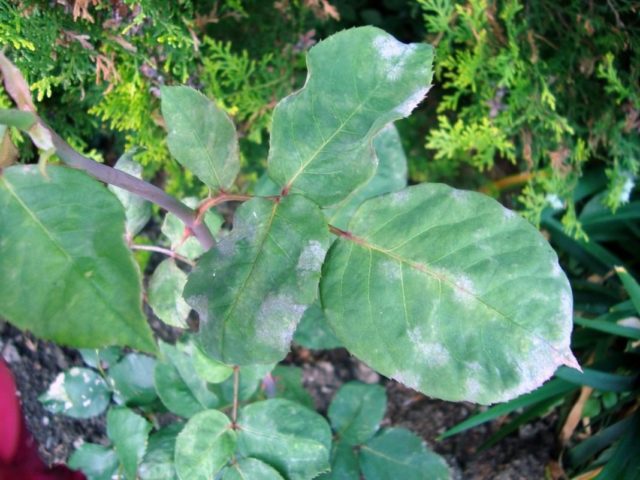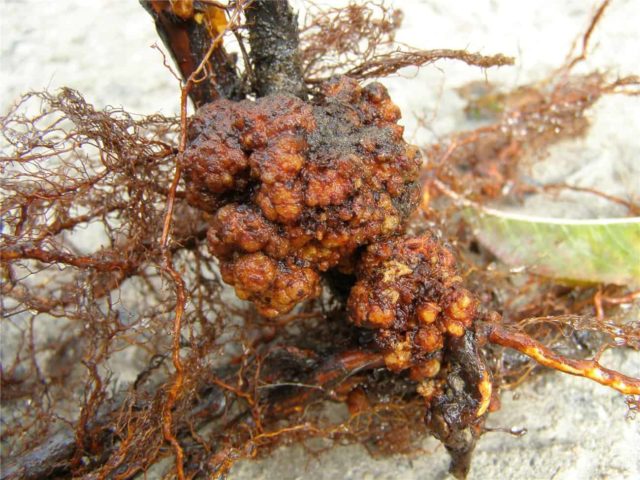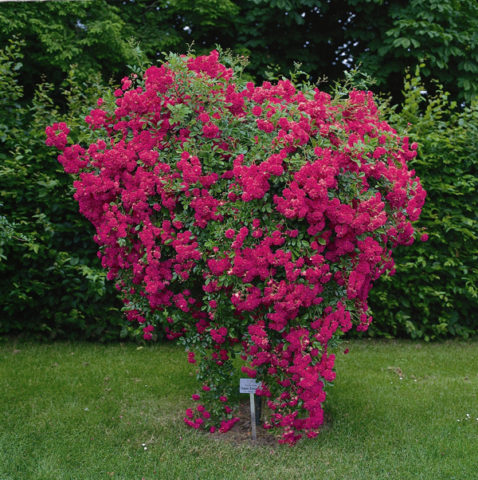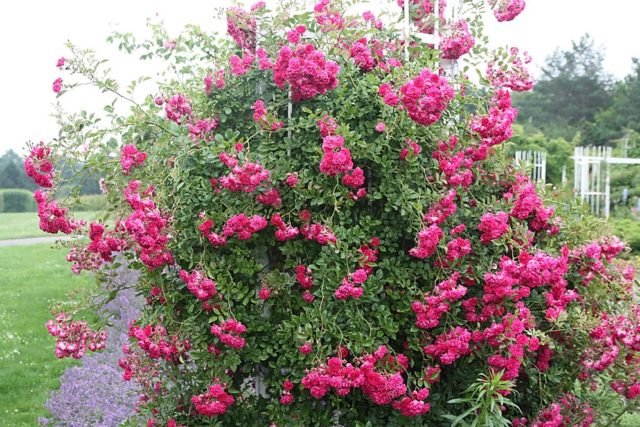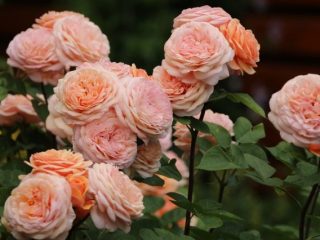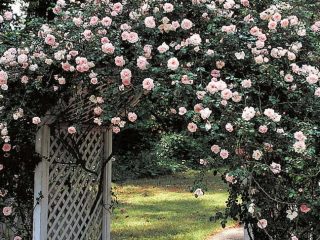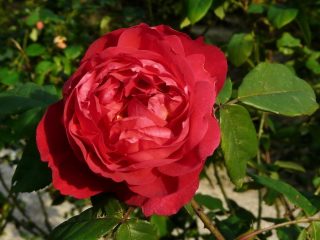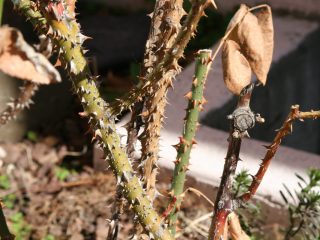Content
Rose Super Excelsa is a magnificent climbing specimen that is ideal for decorating local areas. Recently, the culture has been extremely popular among fashionable landscape designers due to its ease of care and incredible riotous flowering. During the growing season, an adult bush of climbing rose Super Excelsa produces a huge number of buds that bloom, replacing each other.
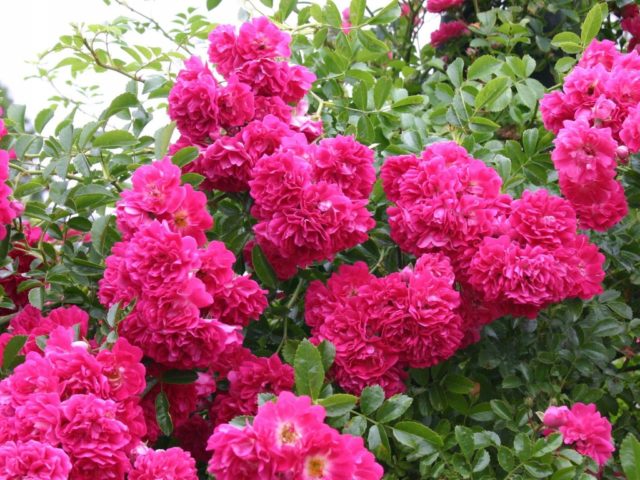
Bright Super Excelsa rose flowers decorate the garden with a magnificent crimson glow
History of selection
Climbing rose Super Excelsa is a fairly popular variety with a 34-year history. The author of the variety is the German breeder Karl Hatzel. He managed to improve the qualities of the old winter-hardy Excelsa. Year of creation: 1986. The first hybrid of the Excelsa variety is distinguished by a repeated flowering cycle and a high degree of resistance to pathogens. In 1991, the decorative rose Super Excelsa by Karl Hetzel was awarded the prestigious ADR Prize.
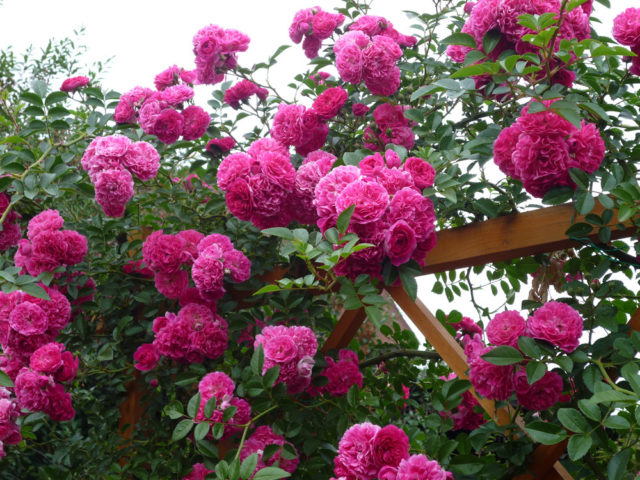
Experts classify the hybrid variety Super Excelsa as a member of the climber line
Description of the climbing rose Super Excelsa
Rose Super Excelsa is a very popular hybrid variety among gardeners. The plant takes root equally quickly and successfully, blooms magnificently and delightfully in southern and northern latitudes, and is distinguished by the following characteristics:
- spreading standard bush or ground cover (depending on the purpose of cultivation);
- bush height 1.5-4 m;
- bush diameter 1.8-2.1 m;
- shoots are flexible, strong, long, with numerous thorns;
- inflorescences are collected in large clusters;
- the number of buds on one shoot is from 5 to 40 pcs.;
- flowers are densely double;
- flower diameter is from 3.5 cm to 4 cm;
- number of petals on a flower - 75-80 pcs.;
- the color of the petals at the beginning of flowering is bright crimson with a white center;
- the color of the petals during flowering is purple;
- the color of the petals at the final stage of flowering is silver-pink;
- the aroma of flowers is weakly expressed, with final notes of vanilla;
- leaves are large, oval, slightly elongated;
- leaf color is dark green, glossy;
- the beginning of the first flowering - the first ten days of June;
- the beginning of repeated (second) flowering - early August;
- Flowering duration is 1-1.5 months.
The climbing rose Super Excelsa is considered one of the most unpretentious “queens of the garden”. It grows well and develops rapidly even in the shade, on poor soils, with rare or insufficient watering.
The flowering of the variety is so spectacular and lush that when the vast majority of raspberry buds bloom, the foliage is practically invisible. The first time the rose blooms very magnificently and abundantly. Repeated flowering within one growing season is accompanied by much less bud formation.
Sometimes a rose exhibits a “capricious disposition” and refuses to bloom. In this case, it is necessary to reconsider the factors that have a direct impact on the process of bud formation: the correct choice of the “place of residence” of the crop, the placement of branches with peduncles in a vertical plane, poor-quality planting material, violation of the rules of care.
The ornamental plant has a universal use: it can be grown as a ground cover or standard crop.
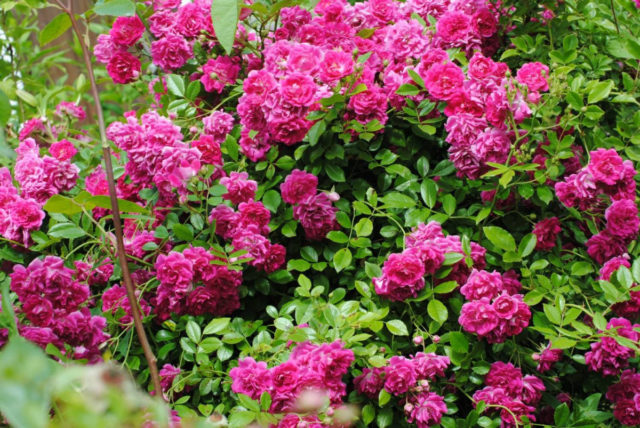
Climbing rose Super Excelsa is a continuously and repeatedly flowering variety.
Advantages and disadvantages of the variety
Climbing rose Super Excelsa is a magnificent ornamental, flowering plant, which is characterized by a large number of advantages:
- frost resistance;
- resistance to diseases and pests;
- first abundant flowering;
- re-blooming;
- universal use in landscape design.
The disadvantages of culture include the following qualities:
- a large number of thorns on the shoots;
- tendency of flowers to fade;
- the need to remove faded inflorescences.
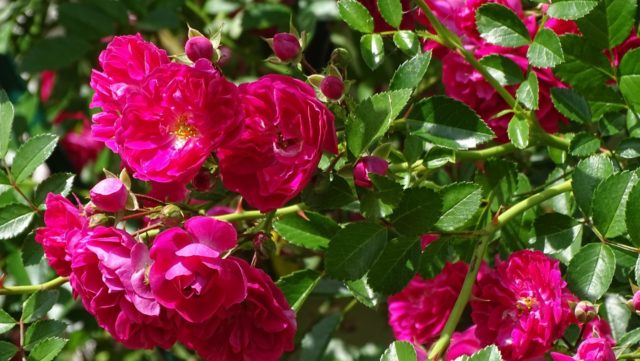
Repeated flowering is the most significant advantage that distinguishes the Super Excelsa rose from the mother variety Excelsa
Reproduction methods
The decorative rose Super Excelsa propagates in various ways:
- seed;
- vegetative (seedlings, cuttings and layering).
Seed propagation does not give the expected results due to the hybrid nature of the variety.
The most acceptable way is to grow ready-made seedlings, which are transferred to the ground in May-June.
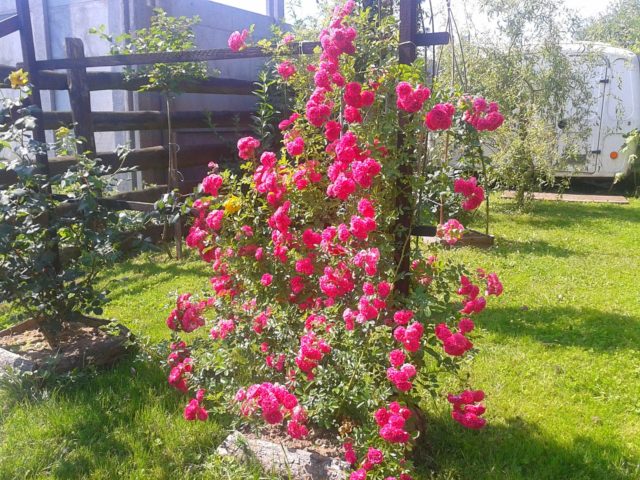
For southern regions with a mild climate, plants can be rooted in the fall
Growing and care
Garden rose Super Excelsa is an unpretentious crop. Growing a beautifully flowering plant requires minimal care.
Selecting a location
Super Excelsa does not like swampy areas. Super Excelsa prefers a bright, airy and dry location with sufficient sunlight in the first half of the day.
The soil is loose, well-drained, enriched with mineral and organic fertilizers.
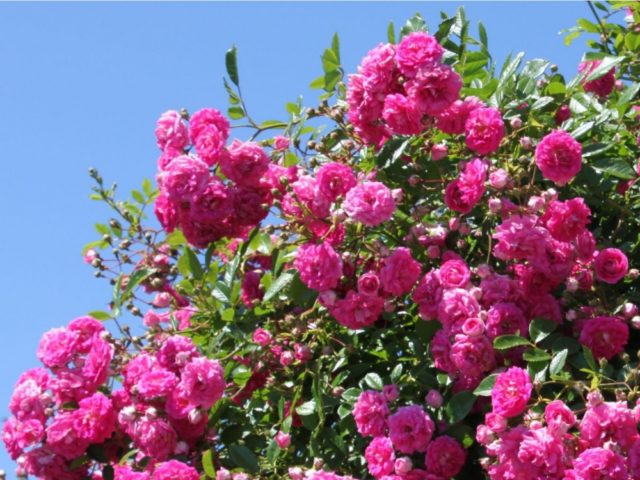
Bright sun all day long will cause the petals to fade quickly.
Landing algorithm
A day before the intended planting in the ground, the rose seedling is immersed in water, the lashes are cut off, and left to 30 cm. The cuts are sprinkled with wood ash. Algorithm for planting roses:
- planting holes are pre-formed;
- drainage is placed at the bottom;
- seedlings are placed in the hole, the roots are straightened;
- seedlings are sprinkled with earth and pressed down;
- The planting site is watered.
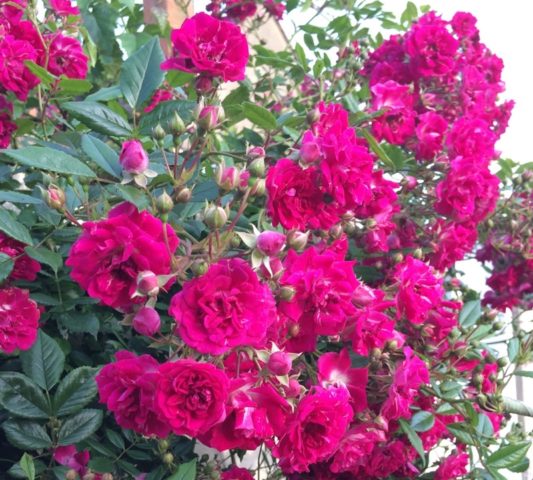
Planting scheme for climbing roses - at least 1.2 x 0.6 m
Routine care
Basic current agricultural technology comes down to the following activities:
- watering and mulching once a week;
- loosening the soil;
- weed removal;
- fertilizer (from the second year of life) alternately with complex mineral and organic preparations;
- pruning shoots in spring and autumn;
- shaping;
- removing faded inflorescences;
- preparation for wintering (removing dead wood, fixing the lashes with a rope, laying on a bedding of spruce branches, covering with non-woven materials, dry leaves).
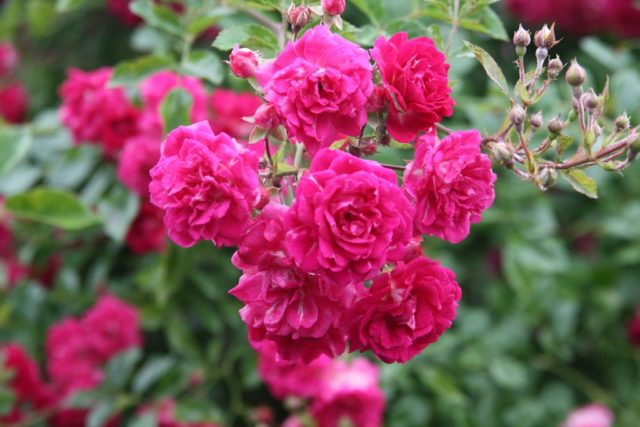
At the end of the first summer of the Super Excelsa rose’s life, the soil is fertilized with potassium preparations
Pests and diseases
Despite the strong immunity of the hybrid variety of roses Super Excelsa, in some cases the plant can be affected by pathogens:
- The microorganism Sphaeroteca pannosa is considered to be the source of powdery mildew on roses. The disease is manifested by the formation of a white coating on the leaves. The affected parts of the roses are destroyed, the bush is treated with a solution of copper sulfate.
The cause of powdery mildew can be an excess of nitrogen in the soil, extreme heat or excessive moisture.
- Bacterial root canker is a dangerous disease of roses caused by the fungus Agrobacterium tumefaciens. The growths and swellings on the roots gradually rot, the bush loses its decorative appeal and dies. To combat bacteria, use a 1% solution of copper sulfate.
The causes of infection of Super Excelsa roses with bacterial cancer can be unsterile garden tools and unhealthy seedlings
There are times when the pest-resistant Super Excelsa rose is attacked by aphid colonies. Insects suck juices from young shoots and leaves. The following agents are effective in the fight against aphids: soap solution, ammonia, wood ash, decoctions of tomato tops, tobacco or wormwood.
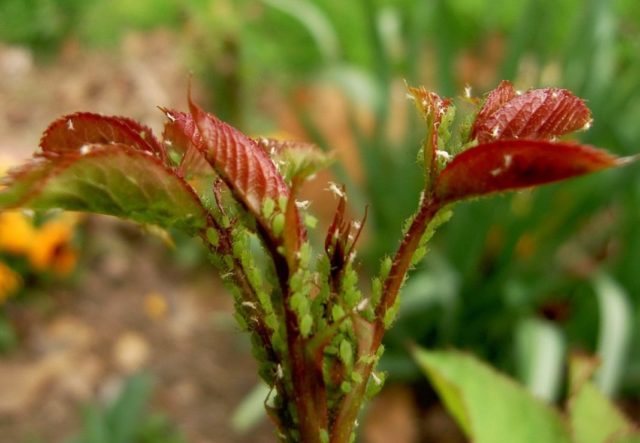
Aphids are able to curl into foliage to avoid poisoning when sprayed
Application in landscape design
The climbing rose Super Excelsa is widely used to decorate local areas. The culture looks impressive as a ground cover or standard. Rose Super Excelsa is an elegant solution for decoration:
- arches;
- gazebos;
- balconies;
- vertical gardening of walls and fences;
- obelisks;
- supports;
- pergola
Near the climbing rose Super Excelsa you can plant marigolds, daisies, fennel, thyme, sage, lavender or mint.
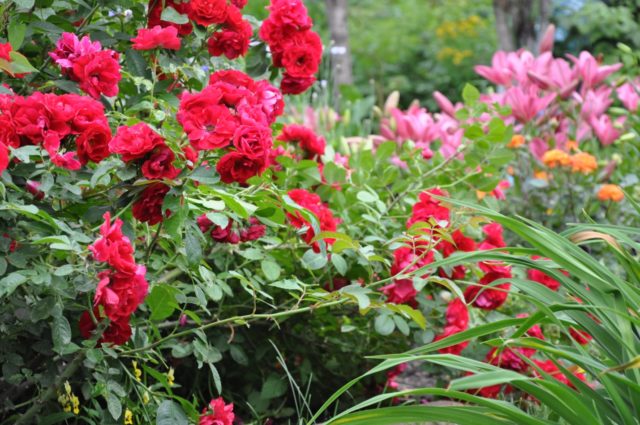
Rose bushes with a huge number of buds look great when planted alone
Conclusion
Rose Super Excelsa is an excellent solution for a large garden and a small cottage. With the right choice of planting site, the plant blooms delightfully throughout the summer, gradually changing the bright crimson color of the buds to lilac-violet, and towards the end of flowering - to silver-pink.The fragrance of pink flowers with notes of vanilla envelops the garden like a velvet blanket.
Reviews with photos about the climbing rose Super Excelsa on a trunk
Reviews, photos and descriptions of the Super Excelsa rose allow us to form a general concept of garden culture for those who decide to plant this miracle on their site.
